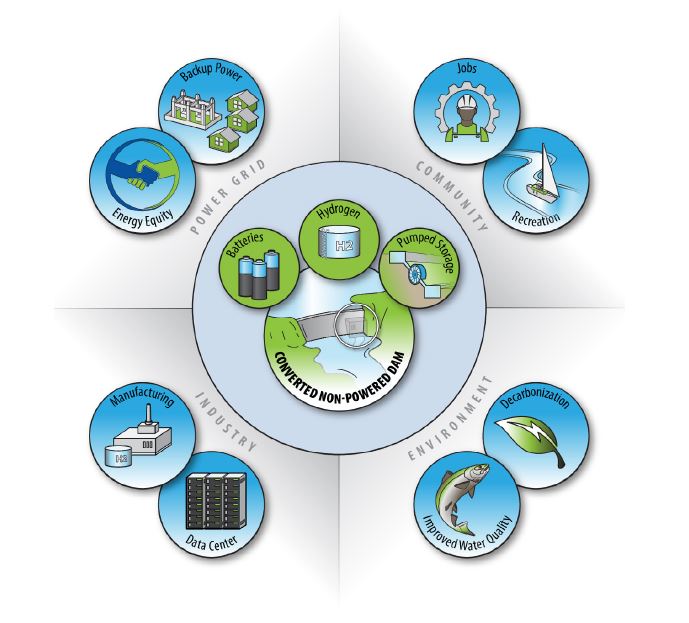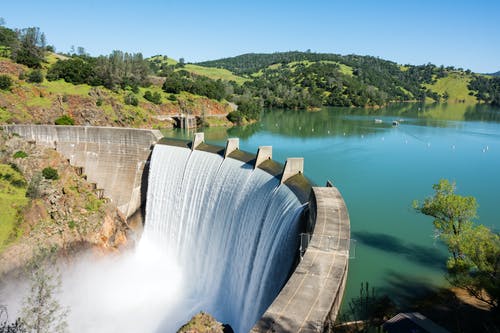Non-Powered Dam Conversion
Less than 3% of more than 90,000 dams in the United States produce electricity, yet they account for more than a quarter of the nation’s advanced energy technology portfolio. Converting even a fraction of non-powered dams could fortify the nation’s energy resilience.
The Idaho National Laboratory (INL) partnered with the Pacific Northwest National Laboratory (PNNL) to research the best ways to add hydropower to non-powered dams, realizing a secure energy future for all Americans.
NPD HYDRO
Researchers at INL and PNNL, funded by the U.S. Department of Energy’s Water Power Technologies Office (WPTO), developed NPD HYDRO, an interactive, web-based tool.
The NPD HYDRO tool assesses non-powered dams for retrofit, including for hydrogen generation feasibility by analyzing:
- The amount of hydrogen production per year (hydrogen generation is directly proportional to the dam’s generation capacity and capacity factor).
- The proximity to industries, medical facilities and natural gas compressing stations.
- The relative cost of electricity in the state

Industry and community impacts
Hydropower dams can provide large amounts of electricity for a wide range of industrial applications.
Identifying non-powered dams with retrofitting potential is advantageous when their location is close to medical facilities, schools and other critical community resources. By modernizing existing dams with power generation, and in some cases energy storage, communities can benefit from secure energy infrastructure.

Energy Storage
Energy storage technologies can add value to hydropower projects by allowing for grid services beyond the minimum required electricity production.
Energy storage options include:
Pumped storage Hydropower: Two water reservoirs at different elevations can generate power as water moves down from one reservoir, through a turbine, to the other reservoir. During times of low power demand, pumps use excess electricity to move water back into the upper reservoir, serving as a giant battery.
Battery storage: Stationary batteries rely on lithium-ion or similar technologies to store electrochemical energy, like a cell phone battery except on a much larger scale. Stationary batteries are useful for providing ancillary grid services, backup power and contributing to grid restoration following a blackout.
